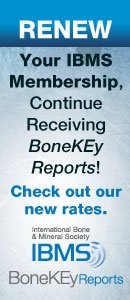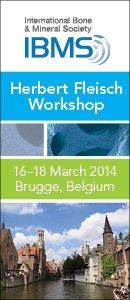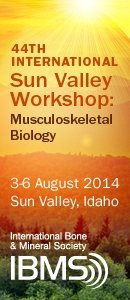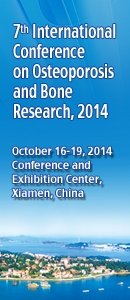
|
Scientific Program
Sunday, 4 August - 8:00AM-Noon (Continental Room)
Diabetes and Bone (Chairs: B. Lecka-Czernik and J. Fowlkes)
There is a growing interest within the research community regarding newly described relationships between energy balance and bone homeostasis. Recent progress in unraveling such cross-talk highlights diabetes as a pathologic condition from which to better illuminate these potential connections. There is now substantial evidence showing that diabetes can affect skeletal well-being. Furthermore, the skeleton has been implicating in regulating glucose metabolism and insulin secretion. In this session, we will cover different aspects of these relationships. Ann Schwartz, Ph.D. (UCSF, San Francisco, CA), known for her pioneering work on epidemiology of diabetic bone disease, will discuss clinical aspects of diabetic bone disease and the effects of anti-diabetic drugs on the human skeleton. Laura McCabe, Ph.D. (Michigan State University, East Lansing, MI), who has extensive expertise in the effects of glucose and insulin on osteoblast differentiation, will discuss the effects of diabetes on bone marrow immune and stem cell status as well as bone remodeling. These discussions will be complemented by a discussion about the effects of insulin and IGF-1 on diabetic osteopathy presented by John Fowlkes, M.D. (University of Arkansas for Medical Sciences and Arkansas Children’s Hospital Research Institute, Little Rock, AR) The session will be concluded with a presentation by Beata Lecka-Czernik (University of Toledo Health Sciences Campus, Toledo, OH), whose work has contributed to the understanding the relationship between fat and bone. She will present findings of a newly discovered form of metabolically active “beige” fat which secretes bone anabolic activities - a new paradigm of ties between bone and energy metabolism system.
Sunday, 4 August - 7:30-8:30PM (Continental Room)
The RIB Award/Plenary Lecture Thomas Wronski (University of Florida): Preclinical Evaluation of Novel Bone Anabolic Treatments: Merging Histomorphometry With Molecular Biology
Sunday, 4 August - 8:30-10:30PM (Continental Room)
Poster session with wine and cheese following the Plenary Lecture.
Alice L. Jee Award Winners Samir Abdelmagid, Northest Ohio Medical University Qianqian Han, Tufts University School of Dental Medicine Kyu Sang Joeng, Baylor College of Medicine Julia Kuliwaba, University of Adelaide Tieshi Li, University of North Carolina at Chapel Hill Joshua Padovano, University of Illinois
Additional Alice L. Jee Award Winners presenting in other sessions Jason Inzana, University of Rochester Medical Center
Christopher Newman, Indiana University Kyle Nishiyama, Columbia University Michaela Reagan, Harvard Medical School Under-Represented Minority Travel Grant Winners Jean de la croix Ndong, Vanderbilt University Nilsson Holguin, Washington University Patricia Juarez-Camacho, Indiana University Alicia Ortega, University of Colorado at Boulder Thomas Siosi Mbimba Jr., Kent State University
Osteoarthritis Award Winner Zhechao Ruan, Baylor College of Medicine Poster Session Xiaohan Lai, University of Delaware Russell Main, Purdue University Meghan Moran, Rush Medical College Carrie Nielson, Oregon Health & Science University Jason Organ, Indiana University School of Medicine Christopher Price, University of Delaware Joseph Wallace, Indiana University-Purdue University Indianapolis
Monday, 5 August - 8:00AM-Noon (Continental Room)
Bone Marrow and the Hematopoietic Stem Cell Niche (Chair: L. Calvi)
The skeleton serves as the principal site for hematopoiesis all vertebrates except fish. The function of the hematopoietic system is to maintain homeostatic levels of all circulating blood cells, including myeloid cells, lymphoid cells, red blood cells, and platelets. These cells are synthesized in the bone marrow, where they derive from a limited number of hematopoietic stem cells (HSCs) that are multipotent and capable of extensive self-renewal. While HSC fate choices are in part determined by stochastic cell autonomous processes, according to the niche hypothesis, signals from the complex marrow microenvironment are also likely to determine stem cell fate. While it had long been postulated that signals within the bone marrow could provide regulation of hematopoietic cells, it is only in the past decade that advances in flow cytometry and genetic models have allowed for a deeper understanding of microenvironmental regulation of HSCs. In this session, we will highlight the cellular regulatory components of the HSC niche and specifically focus on recent advances that have opened novel therapeutic opportunities. Dr. Adams will review spatial localization and regulation of the HSC niche. Dr. Calvi will highlight hormonal regulation of the heterogeneous HSC niche and opportunities for therapeutic manipulations. Dr. Spagnoli will address Mesenchymal Stem Cell homing in relation to the endosteal niche. Finally, Dr. Taichman will define how the HSC niche regulates metastasis and tumor dormancy of solid tumors.
Monday, 5 August - 1:30PM-4:30PM (Continental Room)
Career Development Seminar (Chairs: M. van der Meulen and G. Lester)
There is no registration fee for this afternoon workshop, but pre-registration is required. It is required that you bring a printout of your CV if you participate in this afternoon session.
Monday, 5 August - 4:30-9:00PM
Banquet at the Sun Valley Symphony Tuesday, 6 August - 8:00AM-Noon (Continental Room)
Tuesday, 6 August - 7:30-10:00PM (Continental Room)
Presentations from the winners of the ASBMR/Harold M. Frost Young Investigator Awards
Harold M. Frost Award Winners Yohann Bala, University of Melbourne Yurong Fei, New York University Ronald Kwon, University of Washington Elizabeth Salisbury, Baylor College of Medicine Jae Shim, Weill Cornell Medical College Xiaofang Wang, Baylor College of Dentistry Harold M. Frost Award Winners presenting in another session Julia Chen, Columbia University Eve Donnelly, Cornell University Sarah McBride, Washington University
Wednesday, 7 August - 8:00AM - Noon (Continental Room)
Bone Fatigue, Stress Fractures, and Bone Repair (Chair: C. Hernandez)
Stress fractures caused by excessive repetitive loading are a common injury in athletes and military recruits. Recent work has suggested that atypical femoral fractures associated with long-term anti-resorptive treatment are generated through the same processes as stress fractures, demonstrating that stress fractures occur not only in high performance athletes but also to older individuals with more normal loading. Although stress fractures are not uncommon, the mechanisms leading to stress fracture remain poorly understood.
Wednesday, 7 August - 7:30PM-10:00PM (Continental Room)
Cell Interactions and Signaling at the Bone and Cartilage Interface (Chair: D. Burr)
It is quite clear now that the progression of osteoarthritis requires active participation of both bone and cartilage, and that there is some temporal connection between the processes that occur in the subchondral bone during development of joint disease, and the deterioration of the overlying cartilage. This requires some cross-talk between the two tissues, but exactly how this occurs, or what agents are responsible for the dialogue is unclear. Understanding this interaction and the molecules that signal between the tissues is critical to understanding and eventually controlling the process of joint degeneration. This session convenes a panel of experts who will address different areas of this topic. David Findlay has worked in bone and joint research for over 30 years, focusing on the mechanisms of systemic and focal bone loss, and has recently turned his attention to the interaction of bone and cartilage in joint disease. Liyun Wang has used novel fluorescent techniques to study fluid and solute transport in bone and cartilage, and is these novel imaging technologies in animal models to quantify interstitial fluid flow in bone and cartilage. Daniel LaJeunesse has been studying the basis for bone-cartilage crosstalk for many years, and has done pioneering work looking at the role of Wnt signaling in both of these tissues. |






